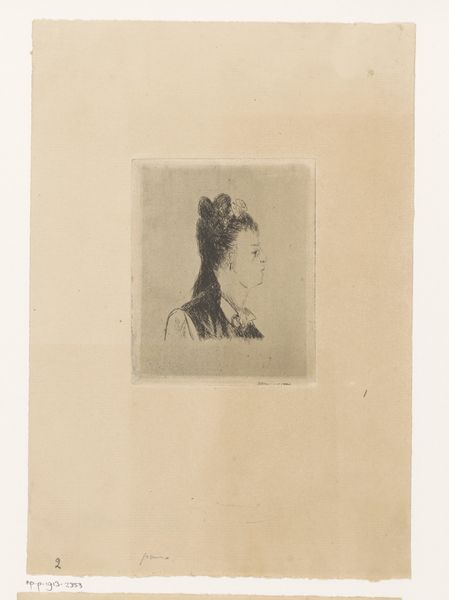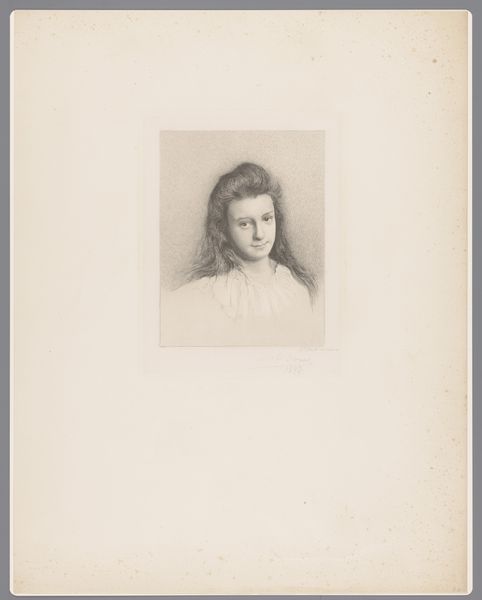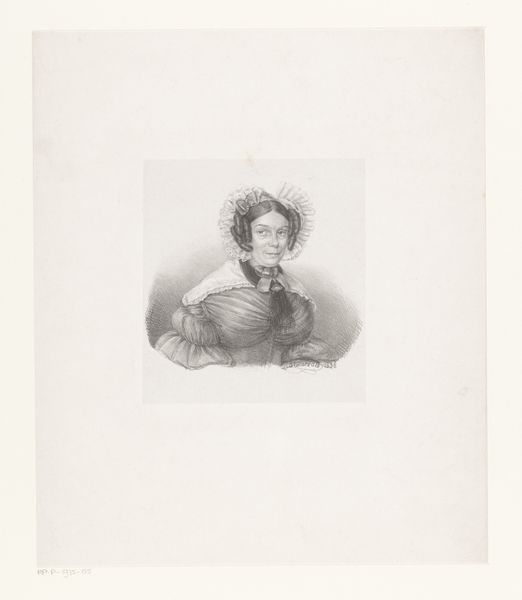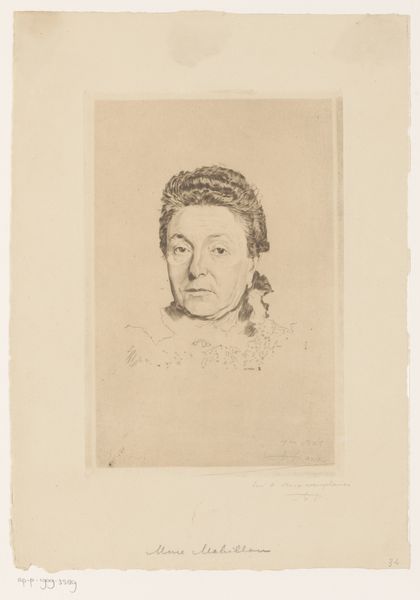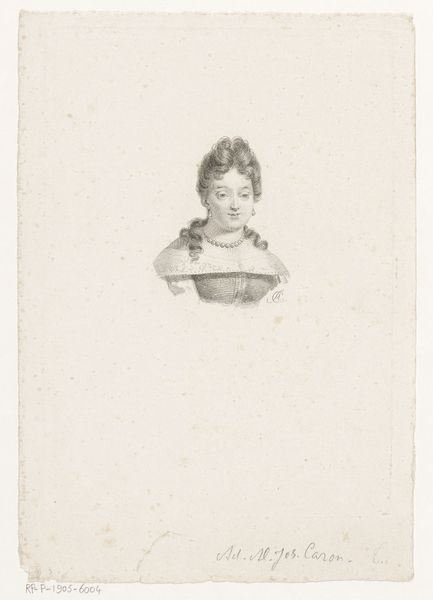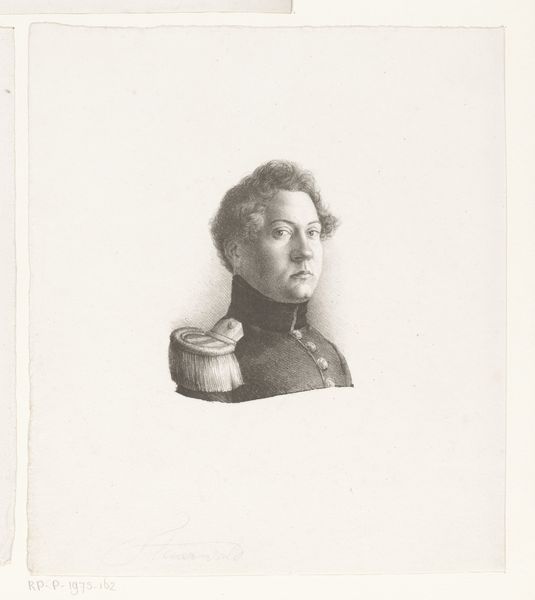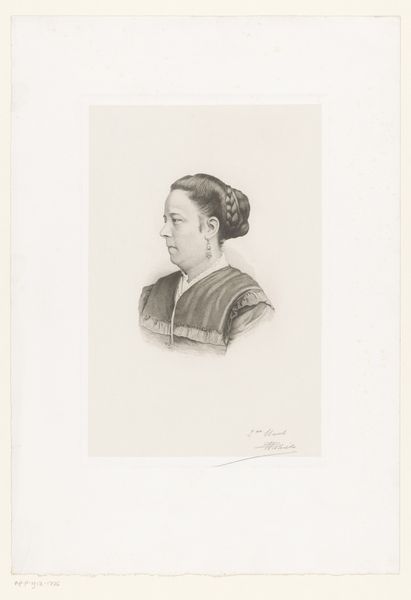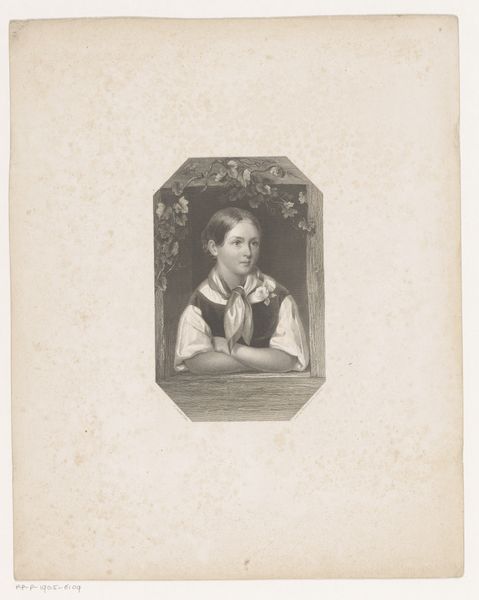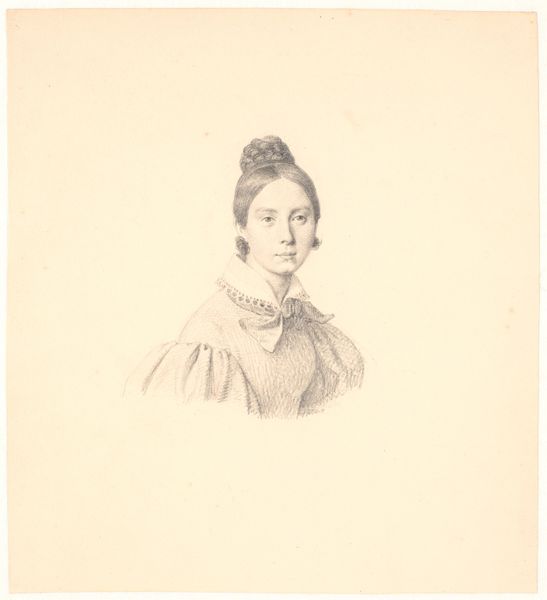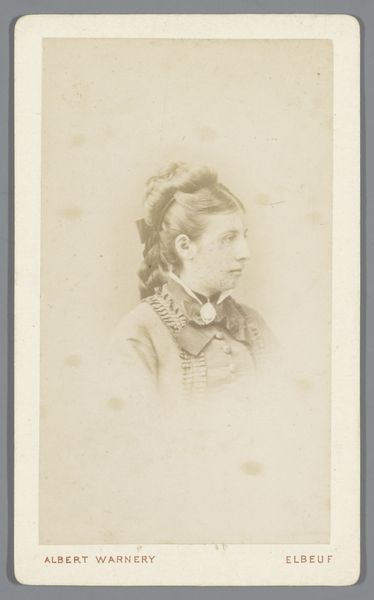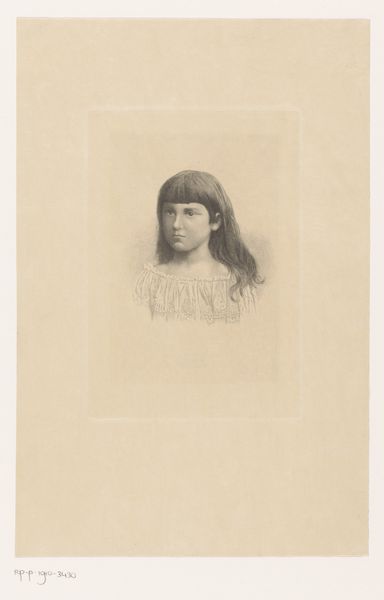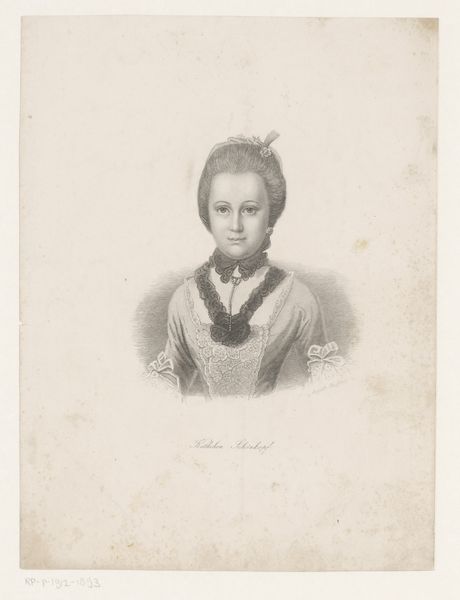
Dimensions: height 240 mm, width 159 mm
Copyright: Rijks Museum: Open Domain
Curator: This drawing is a portrait of the wife of Victor-Charles Mahillon, created in 1897 by Auguste Danse. It’s rendered in pencil on paper and currently resides here at the Rijksmuseum. Editor: The subject exudes a poised and formidable aura, wouldn't you say? Despite the delicate pencil work, there’s a striking intensity to her gaze. Curator: Indeed. Considering the late 19th century context, particularly in the milieu of wealthy European families, portraits such as this played a crucial role in solidifying social standing and visually representing power dynamics, specifically those of the husband and wife. How do you see her depiction fitting into broader social narratives of that era? Editor: Her presentation strikes me as fascinating. There is this rather stiff upper-class decorum coupled with her direct, almost challenging look which could easily signal something simmering beneath. Does her sternness speak to the limited societal role afforded to women or a quiet defiance? Curator: Both. It highlights a common dichotomy within female representation in art: the external compliance with social expectation juxtaposed against internal rebellion or longing for individual expression. One reading might also interpret this controlled image as evidence of a woman carefully crafting and managing her public identity within restricted spheres. It's a tightrope walk. Editor: Yes, absolutely a tightrope walk. Her attire— the high lace collar, the precise arrangement of her hair, even the delicate earrings— they are all elements contributing to a very careful composition. I imagine that this portrait offered the subject both the ability to stake claim to identity while remaining within proper societal form. Curator: Examining artistic conventions reveals an understanding of the political nuances embedded within representations like this. Also, the drawing material itself gives it a subtle contrast. Graphite rendering, with its inherently ephemeral quality, presents fragility and resilience within the portrait's greater historical discourse. Editor: What intrigues me is that interplay between how she perceived herself and how society intended to box her in, visible in the shades and deliberate details. Curator: That is precisely the enduring fascination in this portrait, it's about looking and inferring identity. Editor: These historical layers, interwoven into a single drawing, reveal not just a face but an echo of larger cultural struggles.
Comments
No comments
Be the first to comment and join the conversation on the ultimate creative platform.

